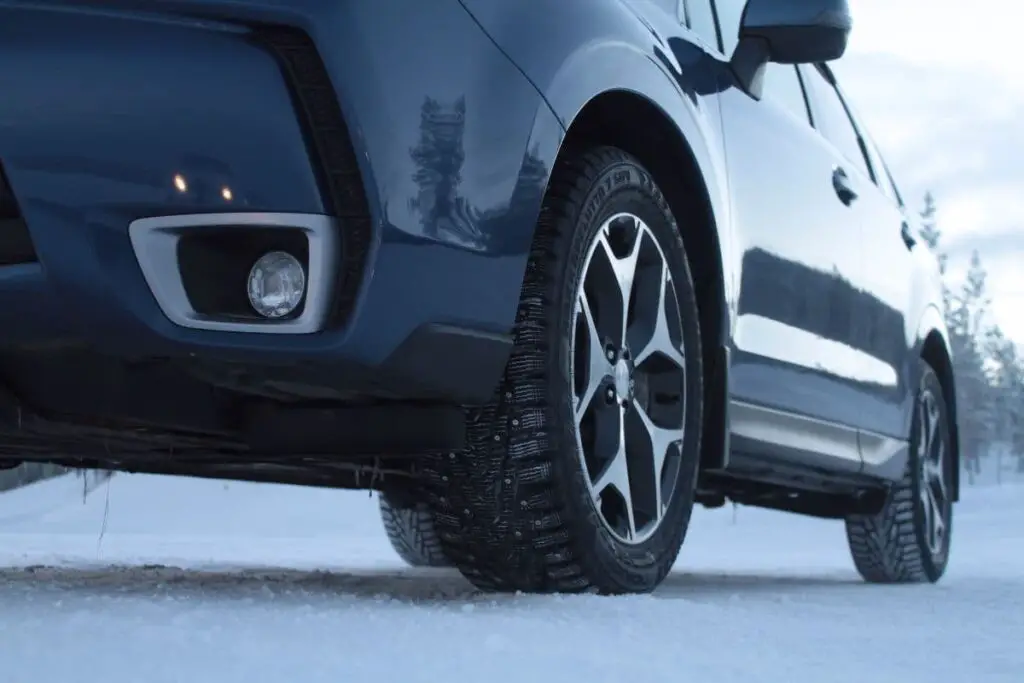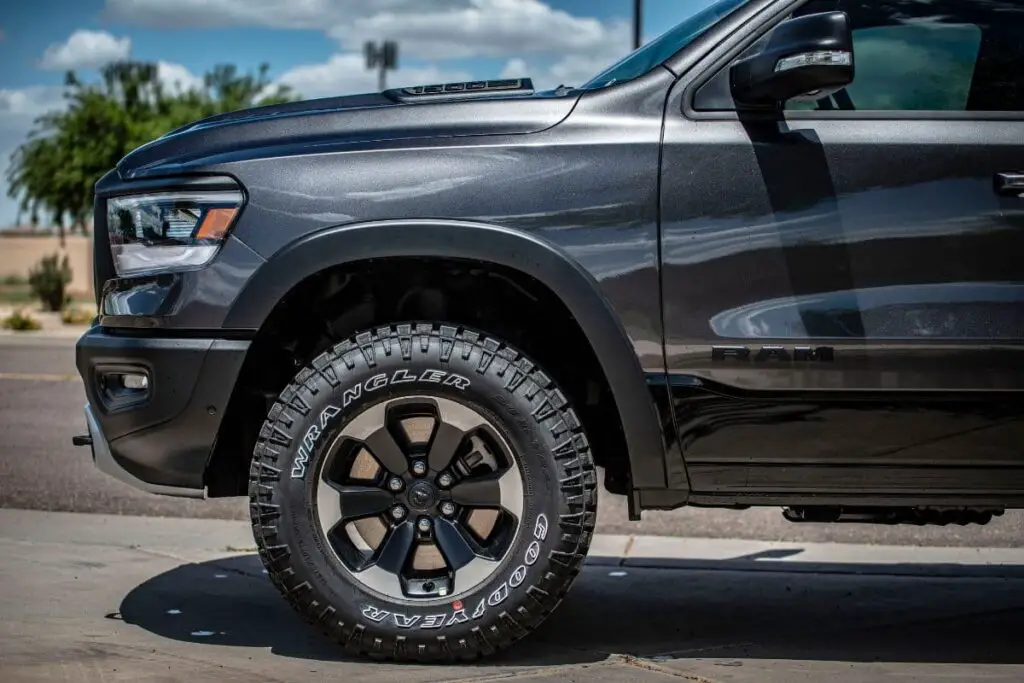As an Amazon Associate, we earn from qualifying purchases. We may also earn commissions if you purchase products from other retailers after clicking on a link from our site.
Considering how unpredictable the winter can be, it’s no surprise that many people use snow tires on their cars for the winter months. But when winter turns to spring and the rain starts to fall, are snow tires good in the rain?
Snow tires are good in the rain. They have deeper treads and softer rubber, which improve traction in rain and snow. Winter tires are also designed to handle a broader range of temperatures, so they perform well in cold and wet conditions.
This article will describe the properties that make snow tires suitable for rainy weather and the potential drawbacks of using these tires in the rain. I’ll also advise when to switch from snow to all-season tires.

Will Snow Tires Work in the Rain?
Many people find that snow tires work even better in wet weather than all-season tires.
Snow tires are designed with unique tread patterns that help evacuate water more effectively. Because of that, you’re less likely to hydroplane (lose control on a wet surface) on slippery roads when you’re using snow tires.
There are a few properties that make snow tires more suitable for the rain, including improved traction on wet surfaces.
Their Deep Treads Displace Water and Improve Traction
One important factor that determines a tire’s traction is its tread depth. Generally, the deeper the tread, the better the tire will perform in wet conditions. Deeper treads displace water on the road, improving the tire’s contact with the road surface. Because of that, snow tires often outperform all-season tires in rainy weather.
They’re Made With Soft Rubber That Improves Grip On Wet Surfaces
Snow tires are made of soft rubber compounds, and as a result, they’re softer than all-season tires, allowing them to conform to the road surface better. The soft rubber improves traction on wet surfaces, as well as snowy or icy roads.
Therefore, snow tires are a good choice for wet conditions.
Snow Tires Are Designed for Cold Temperatures
According to Les Schwab, snow tires are designed to perform well in temperatures as low as -42.78 °C (-45 °F ). Their tread patterns and rubber compounds are optimized for colder temperatures, making snow tires a good choice for cold and wet weather.
And, when the spring rains roll in, having snow tires on your vehicle can keep you on the road longer.
If you drive an SUV and want first-hand experience with snow tires, check out this Bridgestone Winter/Snow SUV Tire from Amazon.com. It’s designed for SUVs and features an excellent multi-cell compound that evacuates water and improves handling on wet surfaces.
The Pros and Cons of Using Snow Tires in the Rain
Pros
- Snow tires provide better traction on wet roads, thanks to their special tread patterns. This can help you avoid hydroplaning and maintain better control of your vehicle.
- Snow tires are more flexible than all-season tires. Because of their softer rubber compounds, snow tires can grip the road better in cold weather conditions.
- Snow tires are designed to perform well in various conditions, including slush, ice, and snow. So if you live in an area that experiences all four seasons, it’s worth considering snow tires, especially for the colder and wetter months.
Cons
- They may not provide as much grip on dry roads as all-season tires do.
- They may wear out faster than all-season tires if you use them year-round.
Note: It’s also important to consider that some areas have laws or regulations about using snow tires in certain seasons. For example, in Canada, it’s illegal to use studded snow tires after April 30th or before October 15th. So check your area’s local laws before switching to snow tires.
Tips for Choosing the Best Tires for Wet Weather Conditions
If you’re going to use snow tires in the rain, it’s crucial to choose a tire specifically designed for wet weather conditions.
Buy a Tire With More Sipes For Better Traction
Sipes are tiny slits or cuts in the tire tread that provide additional biting edges for gripping the road surface, leading to improved traction in wet conditions. As a result, more sipes on a tire mean better performance in wet weather.

So look for a tire with plenty of sipes if you want improved traction in the rain, snow, or other wet conditions.
Choose a Tire With Deeper Grooves
Tire grooves play a significant role in displacing water on the road. Typically, deeper grooves improve performance in wet weather since they can clear more water from the tire’s contact with the road surface. Consider choosing a tire with deep grooves for improved wet-weather performance.
Choose Tires Made of Soft Rubber Compounds
Another crucial factor for wet weather performance is the rubber compound of the tire. As I mentioned, tires made with softer rubber can conform to the road surface better than harder compounds, leading to improved traction in wet conditions.
Go for tires that specifically mention soft rubber or flexible tread materials if you want a better grip on wet roads.
When To Switch From Snow Tires to All-Season Tires
While snow tires can improve performance on wet roads, they may not perform as well on dry roads as all-season tires.
Because of that, it’s advisable to switch from snow tires to all-season tires when the temperature consistently stays above 7°C (45°F), and there’s less chance of wintry conditions.
But as always, you should first consider your specific driving needs and the weather conditions in your area before making any tire decisions. It may also be a good idea to consult with a tire professional for expert advice.

Conclusion
Snow tires can actually provide better traction on wet roads, thanks to their unique tread patterns and soft rubber compounds.
Remember that they may not perform as well on dry roads, and they may wear out faster than all-season tires. When choosing snow tires for wet weather conditions, look for ones with more sipes, wide grooves, and a soft rubber compound.
